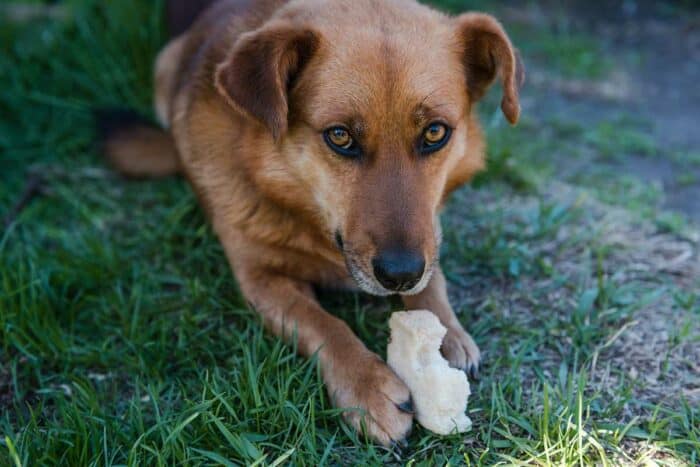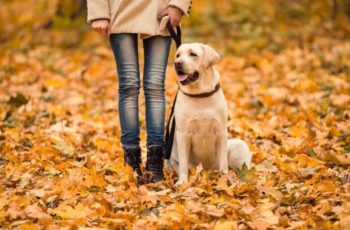This post may contain affiliate links. We may earn money or products from the companies mentioned in this post.
Lovers of pure-bred dogs might not get excited when they hear about cur dogs, as the term is often used to refer to mongrel dogs that tend to be aggressive. The term comes from the Old Norse kurra, which means to grumble or growl.
Cur is also, however, used to refer to a group of dog breeds that were developed for hunting and herding in the United States.
These dogs are thought to have played a big role in the European settlement of Florida, Tennessee, Georgia, the Carolinas, Kentucky, Louisiana, Mississippi, Oklahoma, and Texas.

While none of the various breeds that fall under the American cur umbrella are recognized by the American Kennel Club as purebred dogs, many are recognized by other Kennel Clubs, such as in the United Kingdom.
Moreover, they are all recognized under the AKC Foundation Stock Service dog program, which allows purebred rare breeds to continue breeding and maintain reliable records without full AKC recognition.
Let’s take a look at these amazing and distinctively American dogs and why they make excellent hunters and companions for active households.
Vital Statistics
- 12-26 inches in height
- 25-90 pounds
- 10-13 year life expectancy
- Short hair, medium shedding
- Bred in the southeastern United States
- Hunting and herding
- Highly trainable
- Loyal with families
- Wary of strangers
History Of The Breed
In the United States, the term cur dog is used to refer to several related breeds that were originally common in the southern states. They are called cur as one of the common characteristics of the breed is a naturally occurring bobtail.
These dogs are athletic, intelligent, and loyal. Their versatility meant that the Europeans settling the area could use the dogs for a variety of tasks, including herding livestock and trailing them into thick scrubland if they wandered off.
They were also used to chase small game such as squirrels, possums, and raccoons up trees and bark to alert the hunter to their presence.
Larger examples of the dog were used to hunt feral pigs, cougars, and American black bears. They were often kept on ranches as both companions and guard dogs.
They are thought to be descendants of native American dogs that were mixed with domesticated dogs imported to the Americas by the French and Spanish.
While they have never been recognized by the American Kennel Club, they have been recognized by many of the States that relied on these dogs during their early history. Both Texas and Louisiana have a cur as their state dog.
Appearance
While there is a lot of variety within the different breeds of cur dogs, they do have quite a bit in common when it comes to their appearance.
The majority have a short coat, though a medium-length coat with some feathering is known, and they tend to be low-to-medium shedders.
They have an athletic body with a broad chest and a longer hound muzzle with dropped ears that enhance their tracking ability.
While they can vary greatly in size and weight, the majority are between 16 and 26 inches tall and weigh between 40 and 70 pounds. The males tend to be noticeably larger than the females.
Their coloring can be almost anything, but brindles or coats with markings are much more common than pure colored coats. Eye color also varies greatly, including black, brown, blue, green, and even amber.
Types Of Cur Dog
American Leopard Hound
This is a large cur dog breed that usually measures between 21 and 27 inches and can weigh anywhere from 35 to 75 pounds.
The dog has a distinctive spotted pattern, hence the name leopard, and can be blue, black, mouse, red, yellow, or brindle. They have dense, short coats, medium-length drop ears, and their eyes can be yellow, brown, or blue.
This breed is recognized by the United Kingdom Kennel Club, but not the American Kennel Club. The AKC does recognize the American leopard hound in their Foundation Stock Service.
Blue Lacy
The blue lacy is a medium-sized cur dog measuring 18-21 inches tall and weighing between 25 and 50 pounds. They usually have a smooth blue-colored coat, which gives the breed its name, but red and tricolor dogs are also known.
These dogs were mainly used in Texas, and they were recognized by the Texas Senate in 2001 as a true Texas breed and the official dog of the state of Texas.
Camus Cur
The Camus cur is medium to large in size for cur dogs and has dropped ears and a short, dense coat. They are usually red or red brindle in color.
It is one of the newer cur dog breeds developed by J. Richard McDuffie in South Carolina in 1985 by mixing the leopard cur with a Mexican breed.
Canadian Cur
Canadian curs weigh somewhere between 30 and 60 pounds. Their coats can be black, black and white, tan, or brindle.
They were initially bred by Larry Smith and Larry Rogers for raccoon hunting, but their versatility has allowed them to also be used for hunting lions, bears, deer, and coyotes.
Catahoula Leopard Dog
The Catahoula leopard is named for Catahoula Parish in Louisiana and is also the dog of that state. The dogs are between 20 and 26 inches tall and can weigh between 40 and 115 pounds.
Traditionally used for hunting feral boar, these thick and muscular dogs can come in blue merle, red merle, brindle, and occasionally solid colors. They have distinctive eyes that can be blue, brown, green, or amber.
Kemmer Stock Mountain Cur
The Kemmer stock mountain cur is a refinement of the original mountain cur by Robert Kemmer in Tennessee. They come in a wide variety of colors including blonde, yellow, brindle, black, or blue, and even white is permitted.
These dogs are relatively small among curs, generally measuring between 12 and 18 inches and weighing just 20-30 pounds.
Mountain Cur
The mountain cur measures between 16 and 26 inches and can weigh anywhere from 30 to 60 pounds. They have a short coat that can be blue, black, yellow, brown, or brindle. They are mainly bred in Ohio, Kentucky, Virginia, and Tennessee.
While they were originally developed for trailing small game like raccoons and squirrels, they also make good water dogs.
Mountain View Cur
Mountain view cur dogs weigh between 35 and 55 pounds, with the females usually noticeably smaller than the males. Most are in the light blond to rich dark yellow color range, but brindle and black examples are also known.
About half are born with naturally bobbed tails, or their tails are docked shortly after birth. They are different from the original mountain cur in that they are born without dewclaws on their hind feet.
Parnell’s Carolina Cur
This variety of the cur is bred principally in Hartsville, South Carolina, as a smaller refinement of the Stephens stock mountain cur.
They can range quite widely in size from as short as 12 inches to as tall as 23 inches, and weigh only between 15 and 35 pounds. They have a slender body and deep chest with a low-set, naturally bobbed tail.
Southern Black Mouth Cur
Southern black mouth curs can range from 16 to 25 inches in height and can weigh as much as 95 pounds. They get their name from usually being brown in color with characteristic black markings around their mouths.
In the novel Old Yeller, the ritual dog is a southern black mouth cur, though the dog was played by a Labrador retriever in the film adaptation.
Stephens Cur
These dogs are usually black with white markings on their chest and extremities and stand between 16 and 23 inches tall, weighing 35 to 55 pounds.
They were developed in southeast Kentucky by the Stephens family, which had been breeding mountain curs for over a century. Their particular line of dogs was recognized as distinctive in 1970.
Treeing Tennessee Brindle
These are large but light dogs measuring between 16 and 24 inches and weighing between 30 and 50 pounds. They are usually brindle, or black with brindle trim.
They were developed by the Reverend Earl Phillips in the 1960s as a result of a column that he was writing in a hunting dog magazine.
He started breeding his own to preserve the breed, using specimens from the area between the Ozarks and the Appalachian Mountains.
Yellow Black Mouth Cur
The yellow-black mouth cur is a specific variation of the black mouth cur which is yellow or fawn in color, with distinctive black markings around the muzzle. They can be between 16 and 25 inches tall and weigh between 35 and 40 pounds.
They are most commonly found in Tennessee, Missouri, North Carolina, and southeast Texas. These dogs are known to respond better to female handlers.
Temperament
Cur dogs are bred to be all-rounders capable of learning to do pretty much everything, rather than specifically suited to one task. They are intelligent and eager to please and will learn new tasks through a combination of training and instinct.
They love to be around their people, and bond with their nuclear family quickly. They require a firm hand to keep their energy in check, but they also do not respond well to excessive punishment, which can result in unpredictable behavior.
They require “Goldilocks” training that balances firmness and positive reinforcement.
You can find our complete guide to puppy training here.
They tend to be wary of strangers, but are incredibly brave. It is often said that they never back down from a fight.
This was a highly desirable characteristic for settlers who were worried about wildcats and bears but is less so if they take a dislike to your neighbor.
They need socialization from a young age to help them learn when to jump into protective mode and when to relax.
They are relatively large dogs with lots of energy, bred to have the run of a farmstead. They will need quite a bit of space to call their own, plus regular formal exercise, a minimum of 90 minutes a day split into two sessions.
While these dogs can tolerate being left alone if they have plenty of space, this can undermine the bond that you have and make them more independent, which can also make them more difficult to control.
Caring For A Cur
Cur dogs need outdoor space that they can utilize for most of the day, as they have a lot of energy to burn. If you intend for them to sleep inside, crate training is often the best approach.
They need lots of exercises, ideally, 90 minutes a day split into two sessions. They also need a lot of mental stimulation since they are intelligent dogs, so exercise should ideally involve learning and practicing new skills.
These large dogs tend to have a big appetite, and they do need to eat quite a bit. Of course, all dogs will get fat if they eat significantly more than they need, so watch their calorie intake if their weight gain becomes unhealthy.
These dogs are natural herders and hunters, so they will tend to go after any smaller animals that you have in the house. They are also wary of strangers and will become protective. They need socialization from a young age to keep these behaviors in check.
Curs are sensitive dogs that don’t respond well to punishment, but their independent intelligence means that they also need a firm hand. Ideally, they should have a balance of both with an experienced owner.
While these dogs aren’t clingy, they do best when there are people around most of the time. If they are left alone for days at a time on a regular basis they can develop an independent attitude that can make them difficult to control.
Their short coat doesn’t require too much grooming, and brushing once a week is usually enough to manage shedding.
How often they need a bath depends on their lifestyle. Once every two weeks is probably ideal unless they find themselves in particularly dirty situations on a regular basis.
Their ears need regular attention. The way their ears flop down closes the ear tract and makes it a dark and moist place that invites bacteria. Regular cleaning, at least once a week, is important to avoid ear infections.
Health
Curs tend to be healthy dogs with a lifespan of between 10 and 13 years, which is healthy for a dog of their size. Smaller examples may live quite a bit longer. Nevertheless, like all dogs, they can be prone to certain health issues.
On a day-to-day basis, ear infections are the biggest concern. This is true for most dogs with floppy ears, as the ears are dark and moist, which makes them a breeding ground for bacteria. Regular cleaning is the best way to avoid problems.
They can also have a tendency to develop mange, which is a type of skin disease caused by parasitic mites. Regular monitoring and parasite treatment can make a huge difference.
These dogs can develop hip dysplasia, which is a deformity in the joint that can lead to pain and impede movement in later life.
It often develops at a young age as a result of the different parts of the joint growing at different rates and therefore not fitting together properly.
One of the best ways to avoid this is to not over-exercise growing puppies, even if they are highly energetic.
As a general rule for larger dog breeds, until they are fully grown they need five minutes of exercise for every month of age. So a six-month-old pup needs 30 minutes of exercise a day.
Read more about the right way to exercise your puppy here.
Cur dogs can also be genetically predisposed to develop epilepsy or cataracts and should be monitored by you and your vet. Cataract development as they age can cause partial or complete vision loss.
The Verdict
While the American Kennel Club may not recognize cur dogs as purebred, these distinctively American dogs are much loved and considered by many to have been integral to the taming of the south.
Both Texas and Louisiana have cur dogs as their state dog.
There are quite a few sub-breeds of dog under the American cur umbrella, but this just means that you have more options when looking for the size and color of dog that you want. They all tend to have the same intelligent, proactive, and loyal temperament.
While they are intelligent and highly trainable, they do best with experienced dog owners as they need both a firm and a sensitive hand.
Their tendency to herding, hunting, and protective behavior means that they can be a handful if you don’t know what you are doing.
If you do commit the time to develop a relationship with a cur dog, you will find yourself with a loyal and loveable all-rounder who will happily share your and your family’s active lifestyle.
Do you have experience raising cur dogs?
Share your thoughts with the community in the comments section below.
Save To Pinterest

Top Picks For Our Puppies
- BEST PUPPY TOY
We Like: Snuggle Puppy w/ Heart Beat & Heat Pack – Perfect for new puppies. We get all of our Service Dog pups a Snuggle Puppy. - BEST DOG CHEW
We Like: Best Bully Sticks – All of our puppies love to bite, nip, and chew. We love using Bully Sticks to help divert these unwanted behaviors. - BEST DOG TREATS
We Like: Wellness Soft Puppy Bites – One of our favorite treats for training our service dog puppies. - BEST FRESH DOG FOOD
We Like: The Farmer’s Dog – A couple months ago we started feeding Raven fresh dog food and she loves it! Get 50% off your first order of The Farmer’s Dog.
Check out more of our favorites on our New Puppy Checklist.


